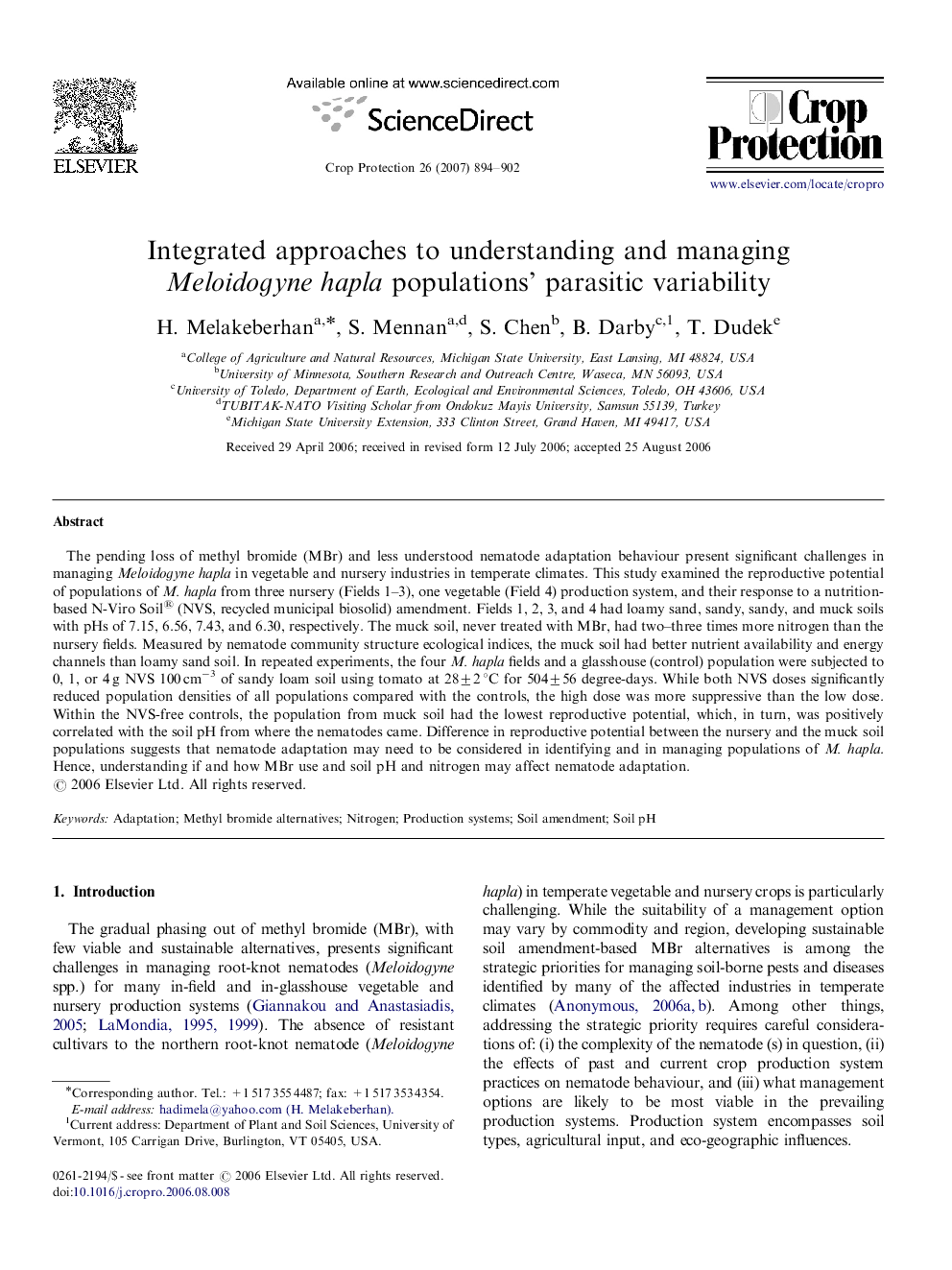| Article ID | Journal | Published Year | Pages | File Type |
|---|---|---|---|---|
| 4507833 | Crop Protection | 2007 | 9 Pages |
The pending loss of methyl bromide (MBr) and less understood nematode adaptation behaviour present significant challenges in managing Meloidogyne hapla in vegetable and nursery industries in temperate climates. This study examined the reproductive potential of populations of M. hapla from three nursery (Fields 1–3), one vegetable (Field 4) production system, and their response to a nutrition-based N-Viro Soil® (NVS, recycled municipal biosolid) amendment. Fields 1, 2, 3, and 4 had loamy sand, sandy, sandy, and muck soils with pHs of 7.15, 6.56, 7.43, and 6.30, respectively. The muck soil, never treated with MBr, had two–three times more nitrogen than the nursery fields. Measured by nematode community structure ecological indices, the muck soil had better nutrient availability and energy channels than loamy sand soil. In repeated experiments, the four M. hapla fields and a glasshouse (control) population were subjected to 0, 1, or 4 g NVS 100 cm−3 of sandy loam soil using tomato at 28±2 °C for 504±56 degree-days. While both NVS doses significantly reduced population densities of all populations compared with the controls, the high dose was more suppressive than the low dose. Within the NVS-free controls, the population from muck soil had the lowest reproductive potential, which, in turn, was positively correlated with the soil pH from where the nematodes came. Difference in reproductive potential between the nursery and the muck soil populations suggests that nematode adaptation may need to be considered in identifying and in managing populations of M. hapla. Hence, understanding if and how MBr use and soil pH and nitrogen may affect nematode adaptation.
